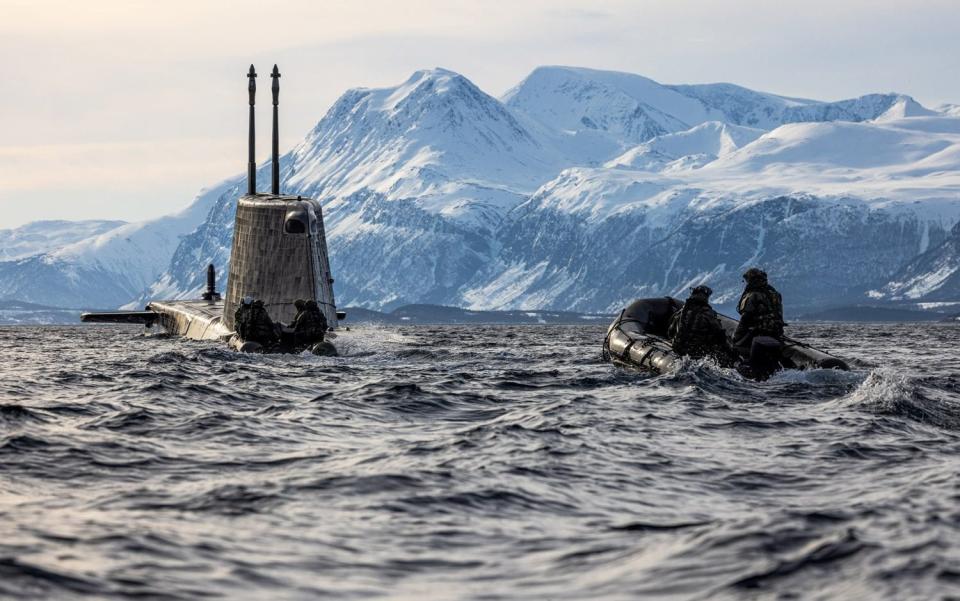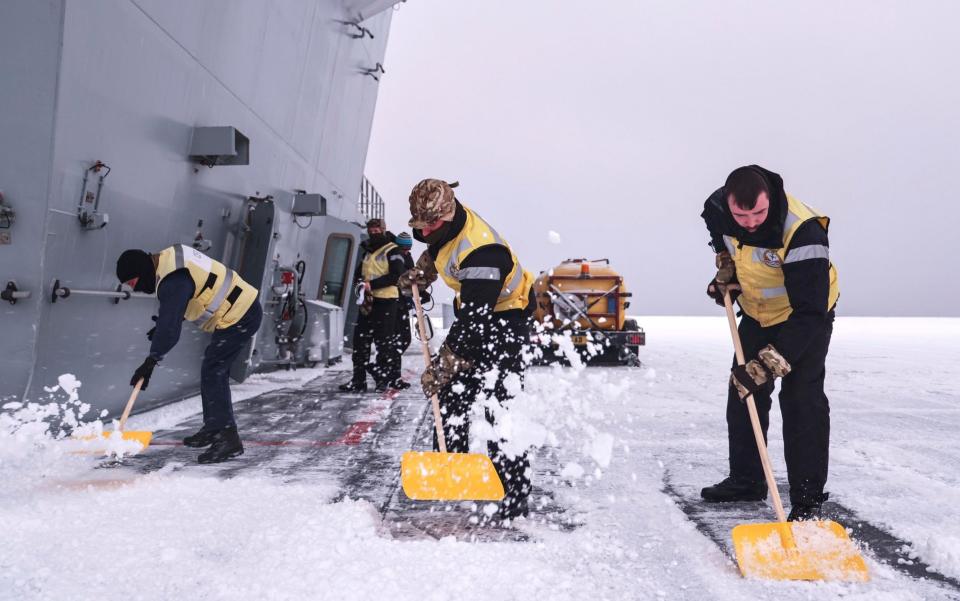Russia has increased Arctic military presence since Ukraine invasion, says Ben Wallace

Russia has significantly increased its military presence in the Arctic since its invasion of Ukraine, Ben Wallace has warned as UK troops take part in the largest Nato exercise in Norway in 30 years.
The Defence Secretary on Monday night said Britain and its allies must strengthen their "unity and purpose as a defensive alliance".
Troops from across Nato countries have been taking part in Exercise Cold Response, a major demonstration of the alliance's strength in the Arctic region.
"The High North and Arctic are vital areas for the Nato Alliance to demonstrate our shared defences and support for wider European security," said Mr Wallace. "Russia's invasion of Ukraine has also been coupled with a significant increase in Russian military activity in the region.
"Exercises like Cold Response underline our unity and purpose as a defensive alliance as we train together with forces from across Europe and North America."
The exercise has included a reconnaissance mission by British commandos, who launched from a Royal Navy submarine in a Norwegian fjord.

Surveillance and Reconnaissance Squadron (SRS) teams launched from a "hunter-killer" submarine for "subsurface insertion" missions, which required them to surveil rocky shores in Lyngenfjord, within the Arctic Circle, while "enemy" troops searched for them.
The SRS is drawn from a Plymouth-based division of the Royal Marines and performs reconnaissance ahead of the arrival of other units of Marines, who can deploy from skis, snowmobiles, boats, helicopters or by parachute.
Their team leader in Norway said: "Being able to move sub-surface gives us a discreet means of moving our specialist teams to any coastline in the world.
"Not only can we conduct operations in isolation, but by accessing and reconnoitring these complex coastlines by small craft we can also set the conditions for larger, more lethal follow on forces."
His deputy added: "Working alongside the submarine was a great opportunity for us. In addition to the submarine work, we also took the opportunity to operate alongside our Norwegian colleagues.
"We used one of their larger, faster craft to access areas out of range of our small craft, an excellent example of working together to achieve a common aim."

Exercise Cold Response is running across March and April in Norway and the surrounding seas and involves around 30,000 troops from 27 countries in Europe and North America.
The exercise is held biannually, but takes place this year against the backdrop of the threat of conflict between Nato and Russia following the invasion of Ukraine.
Mr Wallace's warning about Russian military presence in the region comes after more than a decade of increasing numbers of troops in the region.
Dmitri Medvedev, then the Russian head of state, launched an Arctic strategy to "ensure military security" there in 2008. Since then, it has been a flashpoint between Russia and the Nato alliance.
Last year, the United States accused Russia of "militarising" the region, while Russia said Western forces were provoking their troops by responding in kind.
